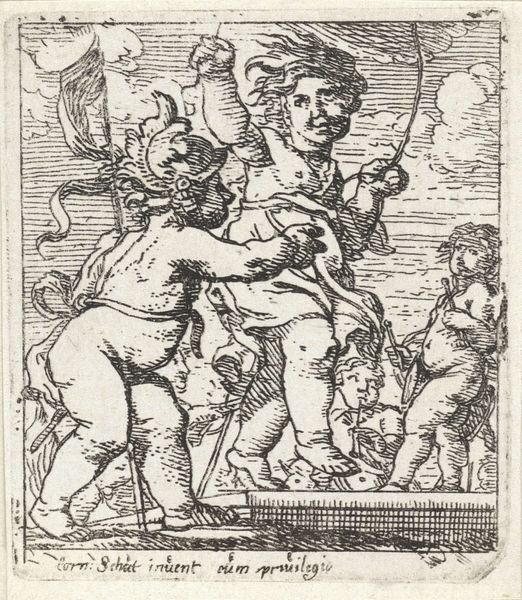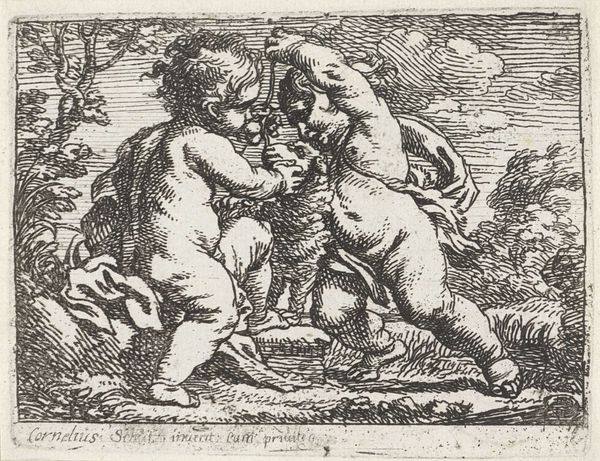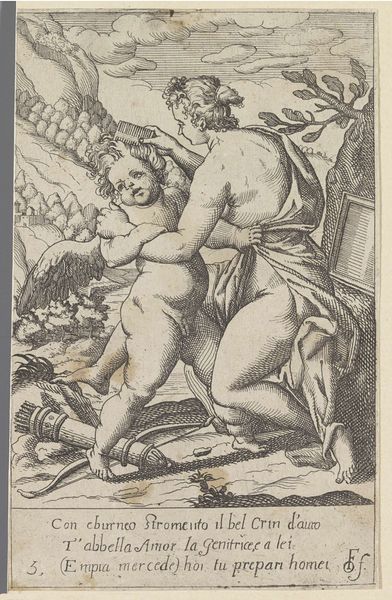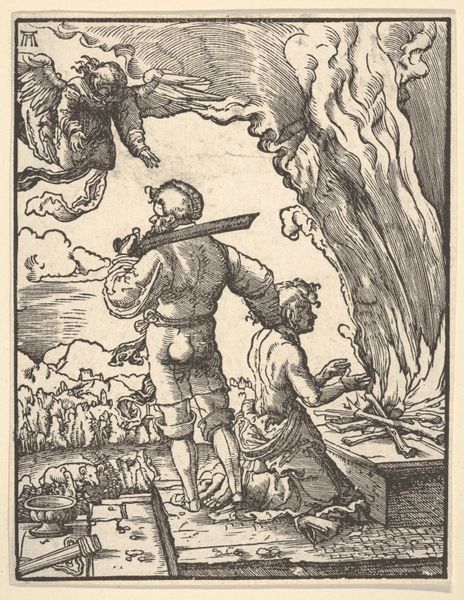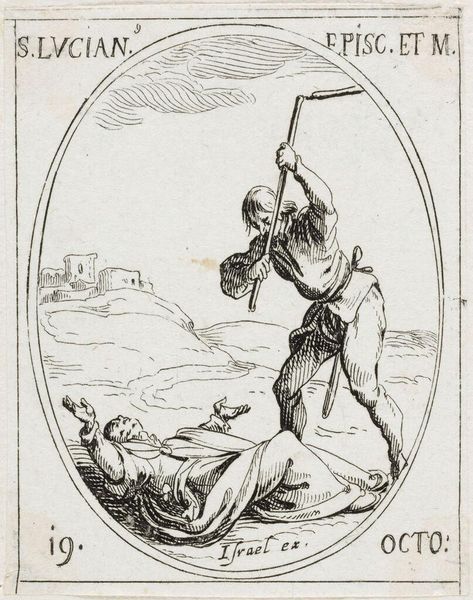
print, engraving
#
baroque
# print
#
pen sketch
#
figuration
#
genre-painting
#
history-painting
#
engraving
#
miniature
Dimensions: height 73 mm, width 63 mm
Copyright: Rijks Museum: Open Domain
Cornelis Schut created this tiny etching, "Three Wrestling Putti," in the Netherlands sometime in the first half of the 17th century. This image encapsulates some fascinating contradictions of the period. On the one hand, we see these chubby, classical putti, harking back to the art of antiquity and the Italian Renaissance. On the other, there’s a boisterous, almost crude energy in their struggle. What I find interesting is how Schut, working within the Baroque style then popular, uses these playful figures to perhaps comment on the social dynamics of his time. Are they merely decorative, or do they symbolize something deeper about power, competition, or even the chaos of human affairs? The fact that Schut signed the work and included “cum privilegio” suggests a consciousness of his status as an artist and the economic structures that supported his work. To truly understand Schut’s intentions, we might look at the publishing history of this print, its circulation, and how it was received by his contemporaries. After all, art always exists within a context.
Comments
No comments
Be the first to comment and join the conversation on the ultimate creative platform.
